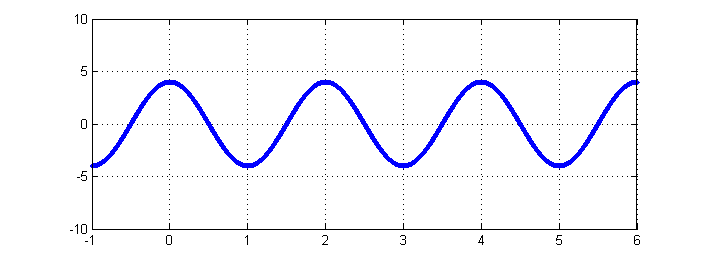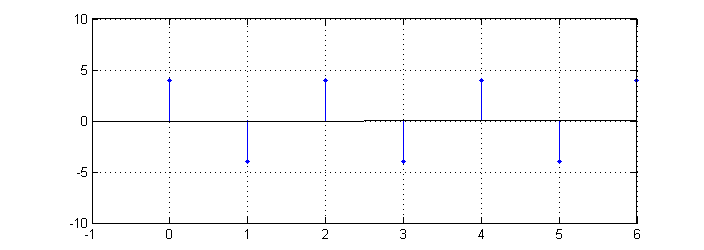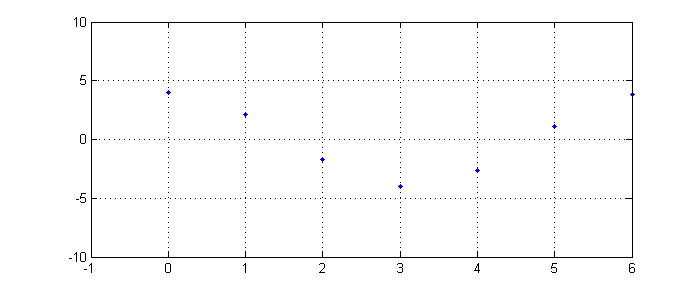| Line 1: | Line 1: | ||
== Periodic CT and DT Signals == | == Periodic CT and DT Signals == | ||
| + | |||
| + | === Background === | ||
When given a CT signal, DT signals can be produced by sampling the CT at certain intervals. For Example: | When given a CT signal, DT signals can be produced by sampling the CT at certain intervals. For Example: | ||
| Line 5: | Line 7: | ||
| − | == CT Periodic Signal == | + | === CT Periodic Signal === |
[[Image:eat21_ECE301Fall2008mboutin.png]] | [[Image:eat21_ECE301Fall2008mboutin.png]] | ||
| + | === DT Periodic Signal === | ||
| + | This function has a sampling frequency of 1 unit. | ||
| + | [[Image:eat_ECE301Fall2008mboutin.png]] | ||
| + | === DT Non-Periodic Signal === | ||
| + | If we now sample this function at <math>\frac{1}{\pi}</math>, the equation would turn into <math>4cos[n]</math> , giving | ||
| − | + | [[Image:eat3_ECE301Fall2008mboutin.png]] | |
| − | + | which is not periodic. | |
Revision as of 13:04, 11 September 2008
Contents
Periodic CT and DT Signals
Background
When given a CT signal, DT signals can be produced by sampling the CT at certain intervals. For Example: Given the periodic signal $ 4cos(\pi t) $, The following 2 signals can be produced, one periodic and one not.
CT Periodic Signal
DT Periodic Signal
This function has a sampling frequency of 1 unit.
DT Non-Periodic Signal
If we now sample this function at $ \frac{1}{\pi} $, the equation would turn into $ 4cos[n] $ , giving
which is not periodic.




